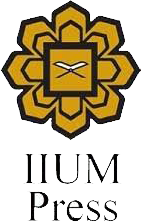HIERARCHY OF 7M-TEACHER-LEADER FROM ISLAMIC PERSPECTIVES
DOI:
https://doi.org/10.31436/shajarah.v0i0.568Keywords:
7M - hierarchy of teacher-leader - Islamic perspectivesAbstract
The main aim of the study is to analyze the hierarchy of
teacher-leader from Islamic perspectives stipulated in the Al-Quran,
As-Sunnah of the Prophet () the deeds of Companions, as well as
practices of previous and contemporary Muslim Scholars. The
framework of the study is based on Islamic literature on teachers as
educator and leader composed from various sources including
established journals, books, articles, and, main-stream documents.
The study revealed that the teacher has important tasks in developing
students’ academic achievements and guiding their spiritual growth.
The function is not merely in instructing and training students in the
prescribed subject and skill but he has to act as a model and
inculcate in his students the norms of behavior and values prescribed
in Islam within and beyond the four walls of the classroom. Teacher
is responsible for increasing virtues and removing evils of the
society. The existence of teachers is a surety of educational and
moral values in the society and lead them to the enlightenment of
future generation prosperous in physical, emotion, spiritual,
intellectual, socialization, environment, and, servant of Allah. A
great quality of a teacher is truth-uttering. In this respect, Islam
suggests a comprehensive the 7M-Hierarchy of teacher-leader
comprises Mudarris - Teacher, Mu`addib – Role-Model, MurabbÊ -
Educator, Murshid - Guidance, MuÑallim - Expert, Mujtahid-
Decision Maker, and, Mujaddid – Transformational Leader.



